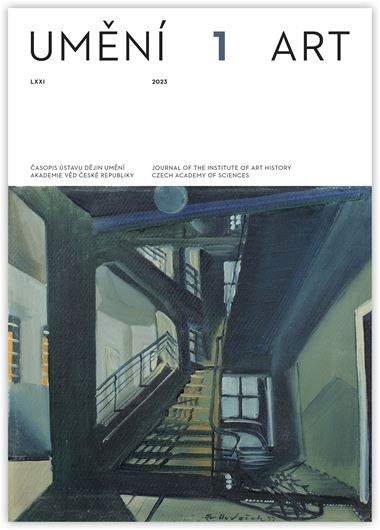Tomáš Pospiszyl
Wherefrom Stride the Night Walkers: Interpreting
the Painting Cycle by František Hudeček
Wherefrom Stride the Night Walkers: Interpreting
the Painting Cycle by František Hudeček
The cycle Night Walkers by the painter and graphic designer František Hudeček (1909–1990) is traditionally interpreted as, on the one hand, self-projection on the part of the artist himself, and, on the other, a programmatic work from the circle comprising Skupina 42 (Group 42), bringing together selected traits of Surrealism and Existentialism. This study examines the specific locations of the creation of Night Walkers and their temporal context. Hudeček was influenced by the particular environment of the occupied periphery of Prague, with its night-time blackout, while at the same time living and working in places directly connected with the activities of the resistance. The cycle also embodies the concept of a new mythology — an attempt to search for deeper social meanings of modern civilisation and its art — as found in texts by the critic Jindřich Chalupecký and the philosopher Václav Navrátil. Certain aspects of Night Walkers also offer connections to books being published at that time popularising the latest findings of science. These can be found, for example, in the publications of Ferdinand Herčík, who uses impressive images to introduce selected aspects of radiology, psychology and the theory of a fourth dimension. The aim of this article is not to replace the existing interpretation of Hudeček’s cycle with a new one, but rather to attempt to expand the original framework with additional meanings. Though the historical events of the Heydrich Terror took place in Hudeček’s vicinity, they cannot be directly linked to his output, nor can they be regarded as the motivation for its creation: correlation does not imply causation. Herčík’s books were published after the appearance of Night Walkers, and so even here there is no causal relationship, but merely the existence of two analogous discourses, one artistic, the other popularising science. The contextual information and the artist’s work are products of the same time and the same questioning approach. However, it we were to start explaining works of art using such contiguities, we would actually be inverting the central topic and background of our research: external circumstances would come to determine our reading of the work, which would result in an argumentative fallacy.
Author's email:
tomas.pospiszyl@avu.cz
DOI: HTTPS://DOI.ORG/10.54759/ART-2023-0103
Full-text in the Digital Library of the Czech Academy of Sciences:
https://kramerius.lib.cas.cz/uuid/uuid:97eb12e6-f1e4-4847-9bfb-45bd62de0e60
< back

